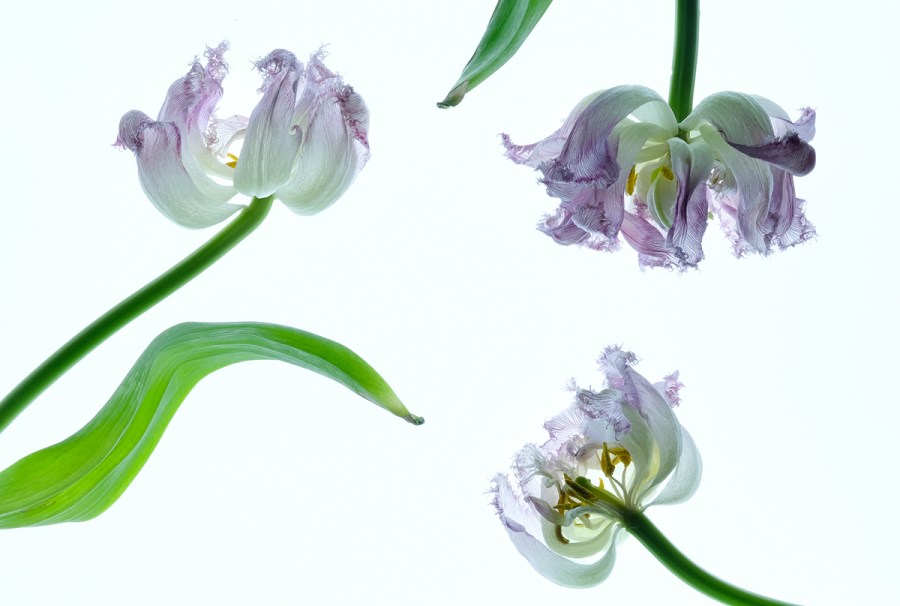Challenging herself to photograph a bouquet of flowers in 30 ways over a 24-hour period, Tracy Calder turns out the cupboards and raids her collection of vintage props to find out if limitations can really make you more creative and improve your still life photography skills.
During a high-profile court case in November 2000, Sir Elton John admitted spending £293k on flowers over a 20-month period. When asked if this was actually possible, he replied, ‘Yes, I like flowers.’ As someone who loves flowers in all of their forms: wild, cut, dried, arranged, loose and faded, I can totally understand how Elton racked up such a bill – which is why I only allow myself the odd indulgence.
In May 2020 we were in the middle of a national lockdown and my days were filled with work, home schooling and rubbing packs of Jaffa cakes with antibacterial wipes. Unsurprisingly, I felt the need for a treat, so I ordered myself a bunch of flowers from a local florist. When the florist arrived at the door and I’d feigned mild surprise (I’m not sure why, but ordering flowers for yourself always feels a bit weird), I placed them on my desk and returned to the article I was writing.

The ‘establishing’ shot shows the bouquet in its entirety reflected in a mirror. I found the mix of straight lines and curves very pleasing
Fujifilm X-T2 with 18-55mm lens, ISO 200, 0.6sec at f/20, tripod
As the afternoon wore on, I felt the urge to take a picture, so I got my camera out and began shooting the bouquet. Taking a straight shot felt a bit like cheating – after all the florist, with her artistic eye, had done most of the work for me – so I started pulling individual flowers out and looking around the house for props. It was so much fun that I decided to see how many different images I could make out of the bunch before it wilted. The answer, it turned out, was about 30.
Getting started
A few weeks ago, I decided to repeat the process, only this time I wanted to make it even harder by shooting all 30 images in a 24-hour period. My first job was to order the bouquet. There were plenty of images showing different designs on the florist’s website, but I knew from experience that these are approximations and the bouquet I would end up with would differ depending on the season and availability.
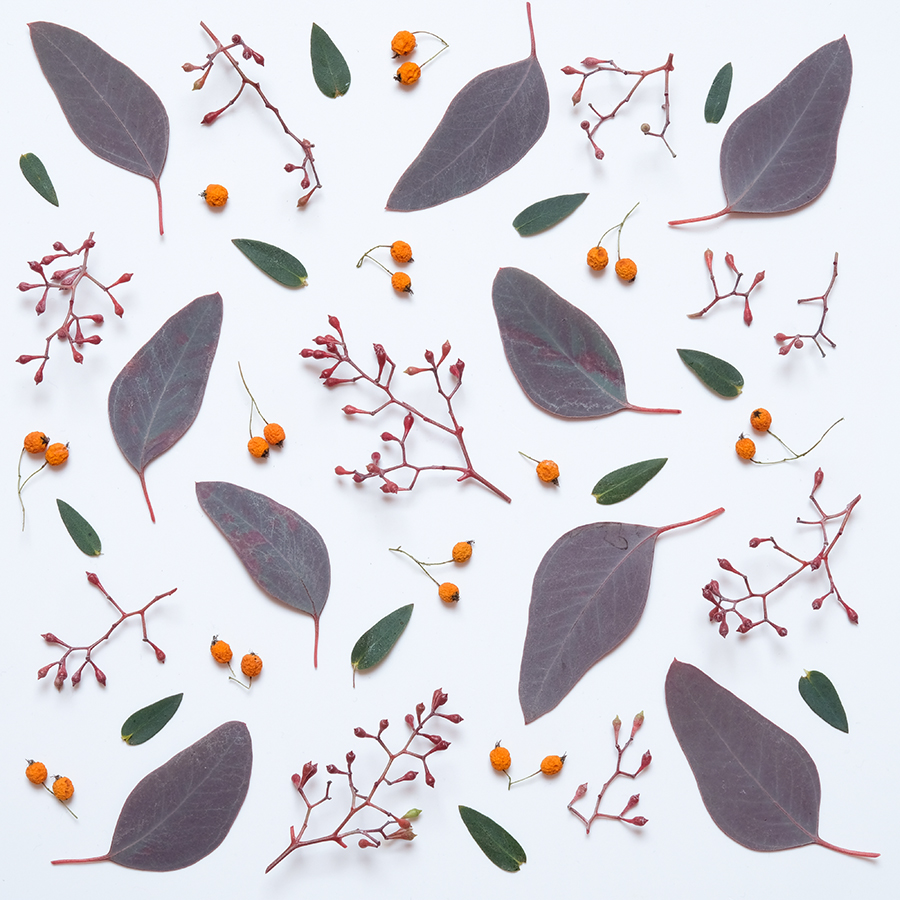
These leaves had a lovely sense of movement, so I decided to go with it and use them in a fun flat lay. The orange berries provide nice contrast
Fujifilm X-T2 with 18-55mm lens, ISO 200, 3secs at f/16, tripod
I eventually settled on a small Cottage Garden bouquet with colourful blooms including roses, antirrhinums and a fair amount of eucalyptus and rosemary. As soon as the flowers arrived, I took a picture of the bouquet in its entirety – once you start pulling flower arrangements apart it’s almost impossible to put them back the way they were, so it’s a good idea to get this one ‘in the bag’ immediately. (It’s a bit like an establishing shot in a movie where the first image sets the scene and provides an overview.)
While it was tempting to take a straight shot, I decided to play around by taking the bouquet into my bathroom and positioning it so that it was reflected in a mirror. I like using bold shapes and lines in my work, so the square tiles set against the oval mirror appealed to me.
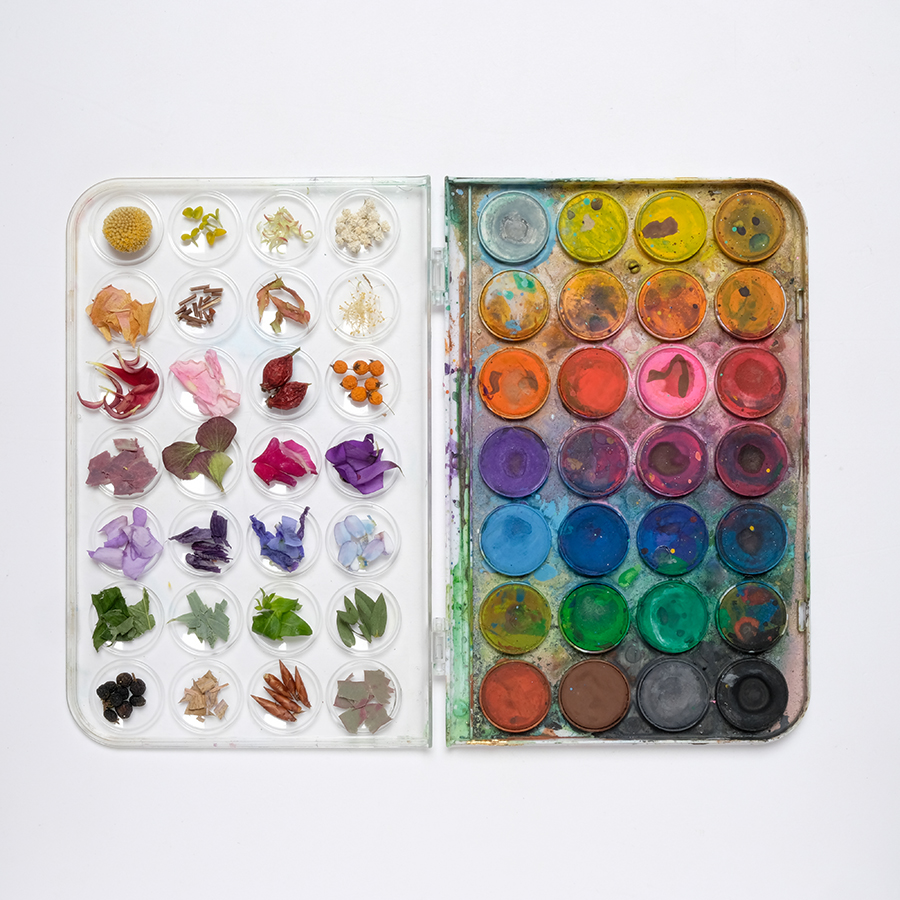
Having found my daughter’s paintbox, I couldn’t resist trying to match the plants in the bouquet to the colours in the palette. I really like the mess of colours on the right Fujifilm X-T2 with 18-55mm lens, ISO 200, 1.7sec at f/20, tripod
Finding inspiration for your bouquet shots
With the establishing shot out of the way, I turned to my trusty notebook – this is where I scribble down ideas and make preliminary sketches for pictures – particularly when I’m planning a flat lay. Inspiration comes from the strangest of places: a few months ago, I was at the V&A in London when I came across some gorgeous Islamic tiles.
When I got home, I found a way of incorporating some of the design elements into my work. I also enjoy looking at fabric, wallpaper and sculpture and find that these sources can trigger new ideas for pairing colours and shapes. Obviously, I look at the work of other photographers too – especially artists who specialise in food, still life and nature (Donna Crous and Krista McCuish are definitely worth following).

Taking inspiration from food photography, I arranged colourful flower parts in vintage bowls and jars to give them the appearance of spices
Fujifilm X-T2 with 18-55mm lens, ISO 200, 2secs at f/13, tripod
Compilations of botanical drawings are also a rich source of inspiration – I highly recommend Plant: Exploring the Botanical World (published by Phaidon) and The Shirley Sherwood Collection: Modern Masterpieces (published by Royal Botanic Gardens Kew).
Once I’ve got a few ideas in mind I have a good look at what I’ve got in the bouquet. At this point it’s important to work out which flowers will wilt first. The bouquet I ordered in 2020 featured a few poppies, for example, so I knew it wouldn’t be long before the petals would fall off or become damaged.
To solve the problem, I plucked a few petals off and froze them in a shallow tray of water. This bought me time, because I knew I could take the block out of the freezer and shoot it when all the other flowers had died. (Of course, there’s always the option of drying or pressing some of the flowers to extend their use too.)
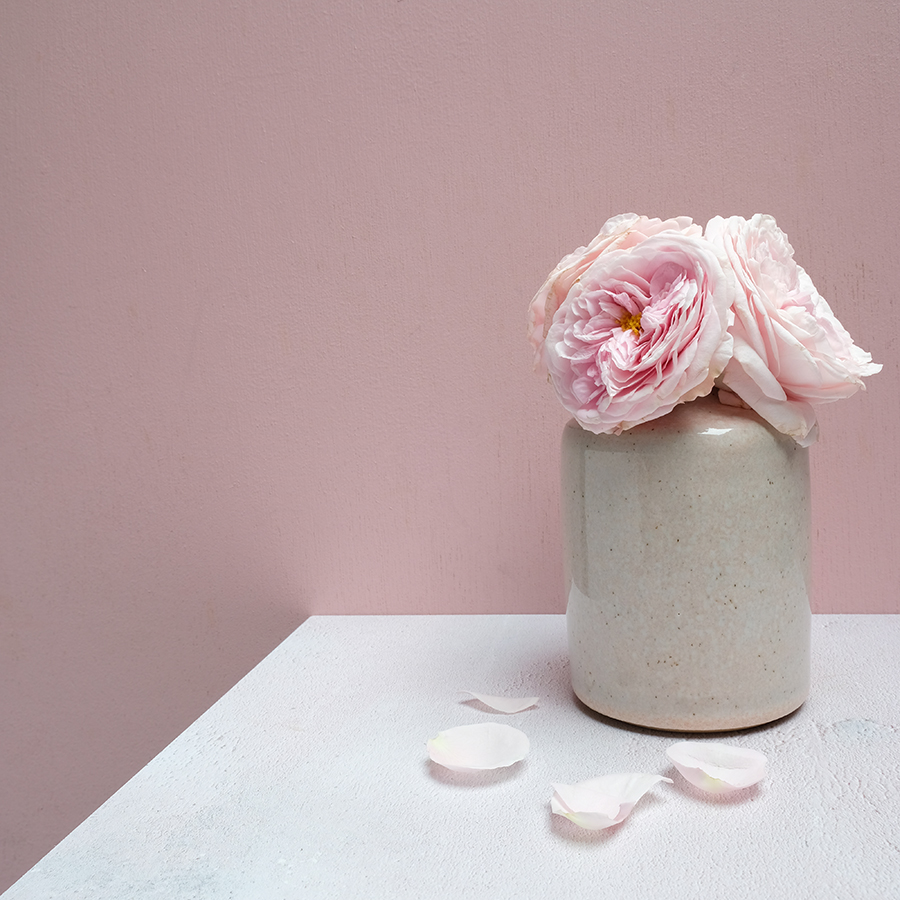
The roses in the bouquet were such a beautiful colour that I decided to complement them with a pink backdrop (it’s actually the inside of a cupboard door) Fujifilm X-T2 with 18-55mm lens, ISO 200, 1/4sec at f/11, tripod
Working against the clock
For this project, however, I had decided to shoot in a 24-hour window, so time really was against me. I’d also decided to restrict myself to a square aspect ratio and use just an 18-55mm kit lens on my Fujifilm X-T2. The thinking behind this was that the fewer choices I had to make, the faster I could work and, in a peculiar kind of way, the more creative I might become.
The first target on my list were the pink roses – the petals of these flowers tend to turn brown quickly, and I wanted to catch them at their best. The blush of pink was so lovely that I decided to pair it with a pink backdrop (the inside of a cupboard door) and a pale pink base (a vinyl backdrop from Photo Boards).
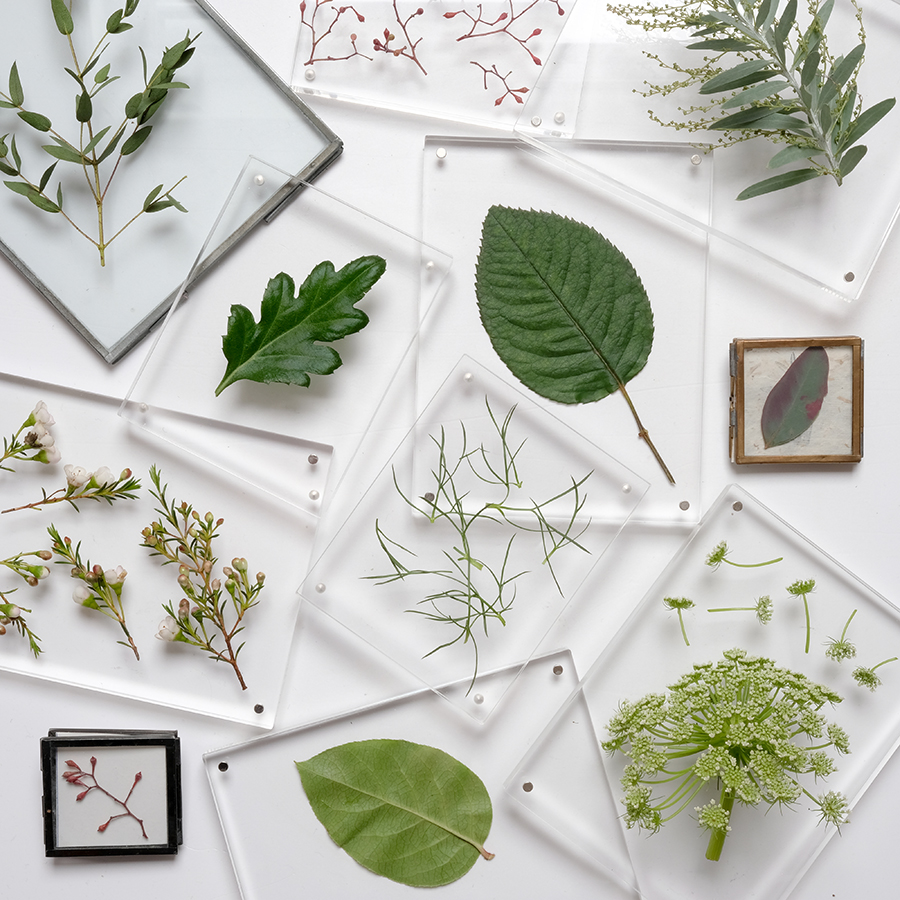
Sometimes you have to deconstruct objects from around the house to get what you want! Here I took some magnetic frames apart, removed the pictures and replaced them with plants Fujifilm X-T2 with 18-55mm lens, ISO 200, 0.8sec at f/16, tripod
I wanted to use natural light for all of the images, so I scheduled the shoot for mid-morning when the sun would be coming in at just the right angle through the skylight in my loft. Tackling a project like this really makes you appreciate how light moves around a building. I took a few other pictures in the same location, one with washi tape acting as a makeshift frame behind a flower.
This led to the idea of removing individual sprigs and leaves and placing them behind empty picture frames (just make sure that you allow plenty of time to clean any glass or shiny surfaces because every smudge and speck will show up as a distraction). Next, I experimented with a flat lay – arranging berries and leaves on a white board and shooting them from above.
Once again, you need to think before you dissect a flower – once you’ve cut the head off or pulled the leaves or petals apart, there’s no going back! (At this point it’s worth mentioning that you should keep everything that you trim off – because you never know when a tiny stem or stamen will happen to come in useful.)

Raiding my daughter’s craft supplies, I came across watercolour paints and a large decorator’s brush – perfect for playing with textures and experimenting with colour. Fujifilm X-T2 with 18-55mm lens, ISO 200, 7secs at f/20, tripod
Introducing props
As a keen flat lay photographer, I own hundreds of props: old metal dishes, glass vases, vintage cutlery, fabric swatches, test tubes, wooden boxes – you name it. Nearly all of them have come from car boot sales, charity shops or eBay and most cost me just a few pounds (or pence). I love mixing vintage objects with fresh flowers – it’s a combination that seems to work well.
Having dug out a few choice items, I set to work filling test tubes with water, arranging berries on plates and just playing around. This is when an understanding of line, shape and colour is handy – it’s incredible how moving one object a few centimetres can benefit or upset the relationship between everything else in the frame.
One prop I’d been keen to use for a while was a vintage mirror that I picked up at a local car boot sale in the summer. This mirror has a beautiful floral decoration across the bottom, which seemed to suit the theme. Having placed it directly under the skylight in my loft, I positioned two vintage glasses on top and laid a few sprigs of foliage above them.

I’ve got a vast collection of props including old wooden boxes and scientific apparatus – here I decided to combine them both with some flowers
Fujifilm X-T2 with 18-55mm lens, ISO 200, 4secs at f/18, tripod
I wasn’t entirely happy with the end result, but it gave me some ideas for a new project, so it was definitely successful on that front! Sticking with reflections, I took a milk bottle I often use as a vase, added a rose and focused on just the stem and leaves. The light in the bathroom led to some beautiful reflections on the body of the bottle.
My daughter’s bedroom was another rich source of props – in fact, where possible I like to enlist her help with projects like this because she is free of preconceptions and always comes up with such unique ideas! Here I found a set of watercolour paints and a large decorator’s brush that resulted in a playful hour ripping up flowers and throwing paint and petals onto the floor.
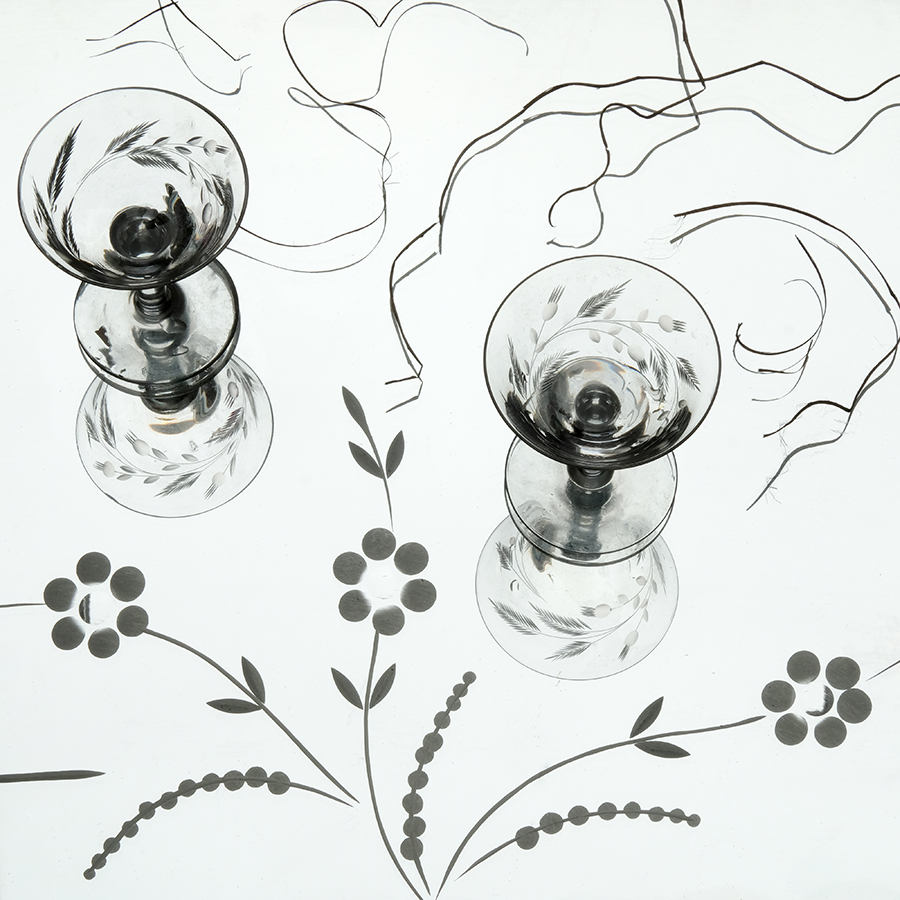
Lightweight objects, such as glasses and flowers, can produce wonderful reflections and graphic silhouettes when placed on a vintage mirror
Fujifilm X-T2 with 18-55mm lens, ISO 200, 1/3sec at f/20, tripod
As the light began to fade, I switched on my Cutterpillar Glow (an A3 LED light pad) and arranged some of the translucent leaves from the bouquet on it. Happy with the overall position, I overexposed by a few stops and fired away.
Looking back, there were some ideas that worked and some that clearly didn’t (my daughter with a floral crown that made her look like Jesus springs to mind!). What did work, however, was the idea that introducing limitations can boost creativity. Once I’d decided that I could only shoot flowers from one bouquet, in a square format, using one lens and natural light, it was strangely liberating.

You don’t have to include the whole of a flower in your picture – sometimes less is more. Here, an old milk bottle is being used as a makeshift vase
Fujifilm X-T2 with 18-55mm lens, ISO 200, 6secs at f/18, tripod
With so many technical decisions removed I could really focus on coming up with fresh ideas and compositions. In short, it brought some fun back to my photography. In theory, you could repeat the exercise with any object – One Cheese Grater, 30 Ways anyone? Personally, I’m going to keep channelling my inner Sir Elton. I’ve just got to find £293k down the back of the sofa to feed my habit.
One that didn’t work
Vintage cutlery, with all its quirks and patina, can make great props. I have a big collection of coffee spoons, butter knives and cake forks, but this set is a favourite of mine as I love the art deco fluting at the ends and the way that each spoon differs slightly in colour. Last year I made a flat lay with the set surrounded by red berries, and it was surprisingly effective. As a result, I decided to try the same thing again, only this time with the spoons surrounded by flowers.
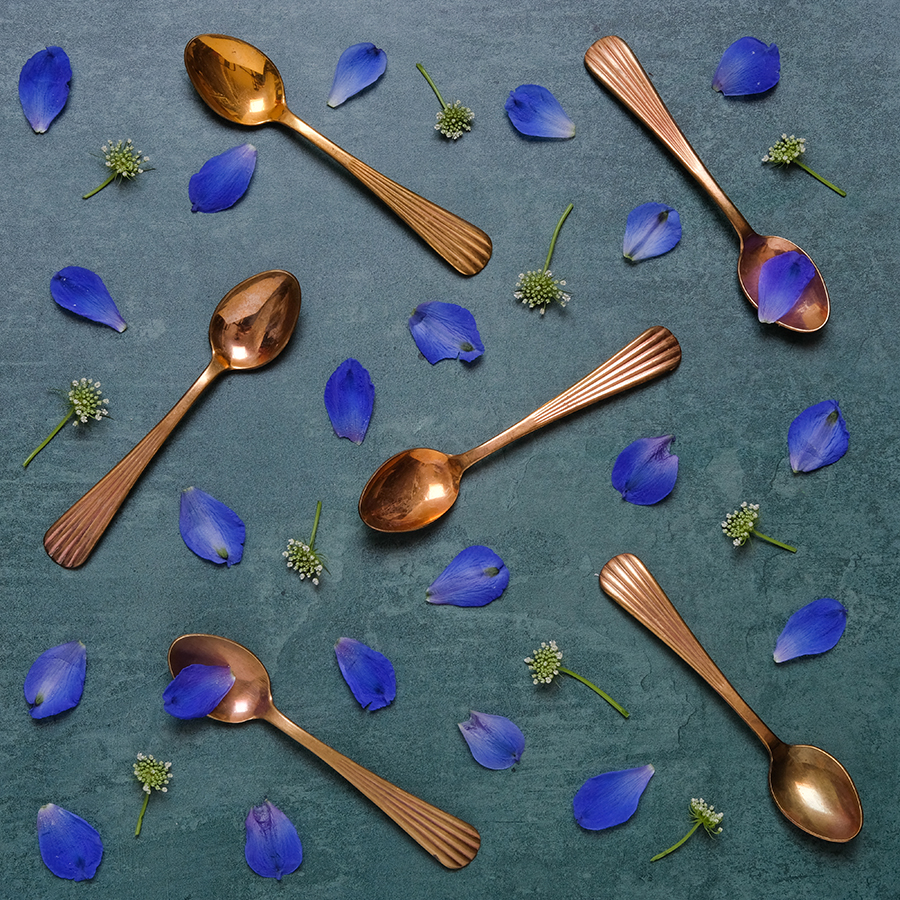
For me, the picture fails on four levels. Firstly, the arrangement of the spoons feels forced and contrived. Secondly, you can see the room reflected in most of them. Thirdly, a number of the petals are damaged or bruised in some way. Finally, the spoons have no relationship or connection to the flowers. The colours are pleasing, but that’s not enough to create a story.
Top tips for photographing your bouquet
Remain flexible
Ordering a bouquet of flowers can be a bit like ordering a veg box: you don’t know exactly what you’re going to get, but based on the season you have a pretty good idea. If the picture showed alliums and you got roses, don’t despair – use it as a springboard for new ideas.
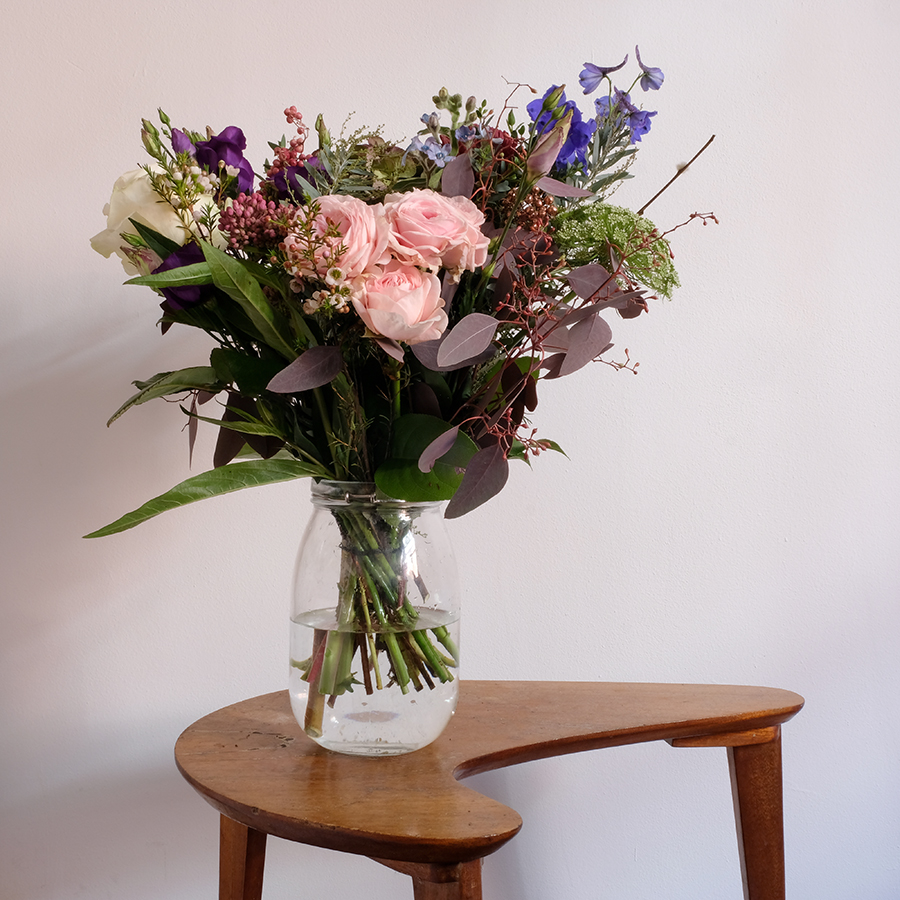
Play the long game
Once you’ve cut a stem or pulled a petal off a flower you can’t put it back on, so take all of the long-stem, full-flower shots first. It’s a good idea to keep everything you remove – odd berries and bits of stem can be ideal for filling in gaps in flat lay arrangements.
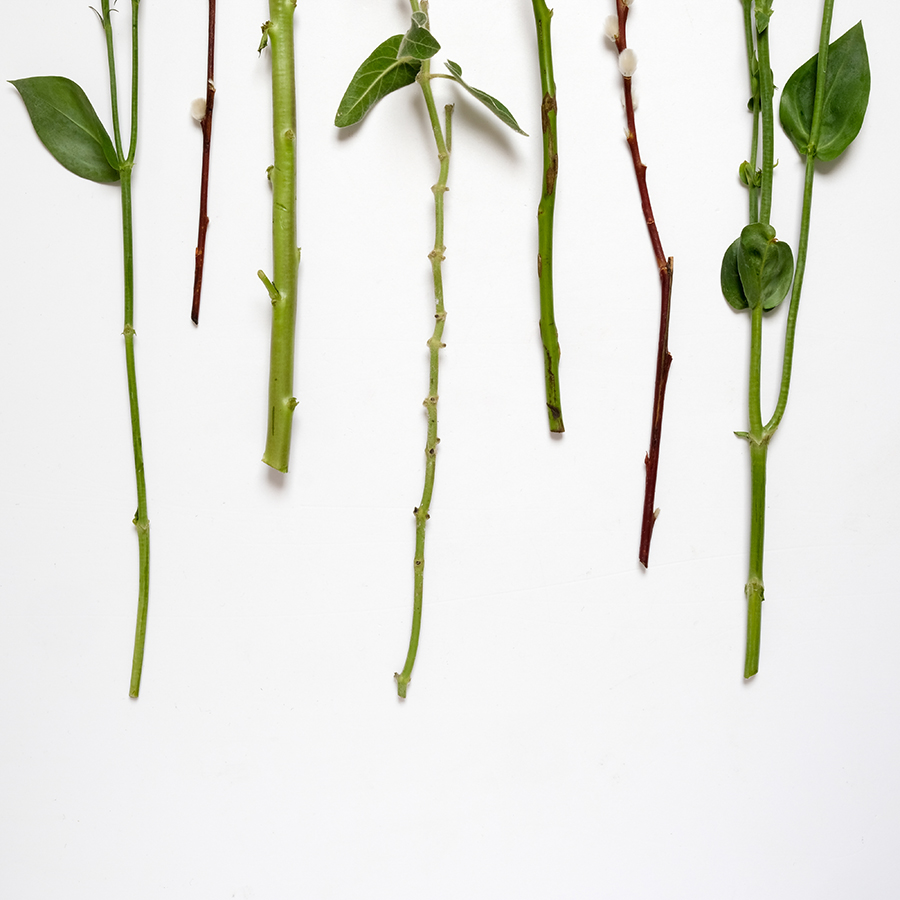
Raid the stationery
I often use tape or Blu Tack to hold flowers and leaves in place, but I also like experimenting with washi tape. Strips of this decorative coloured tape can be used to make borders, create makeshift picture frames or just introduce a graphic element.
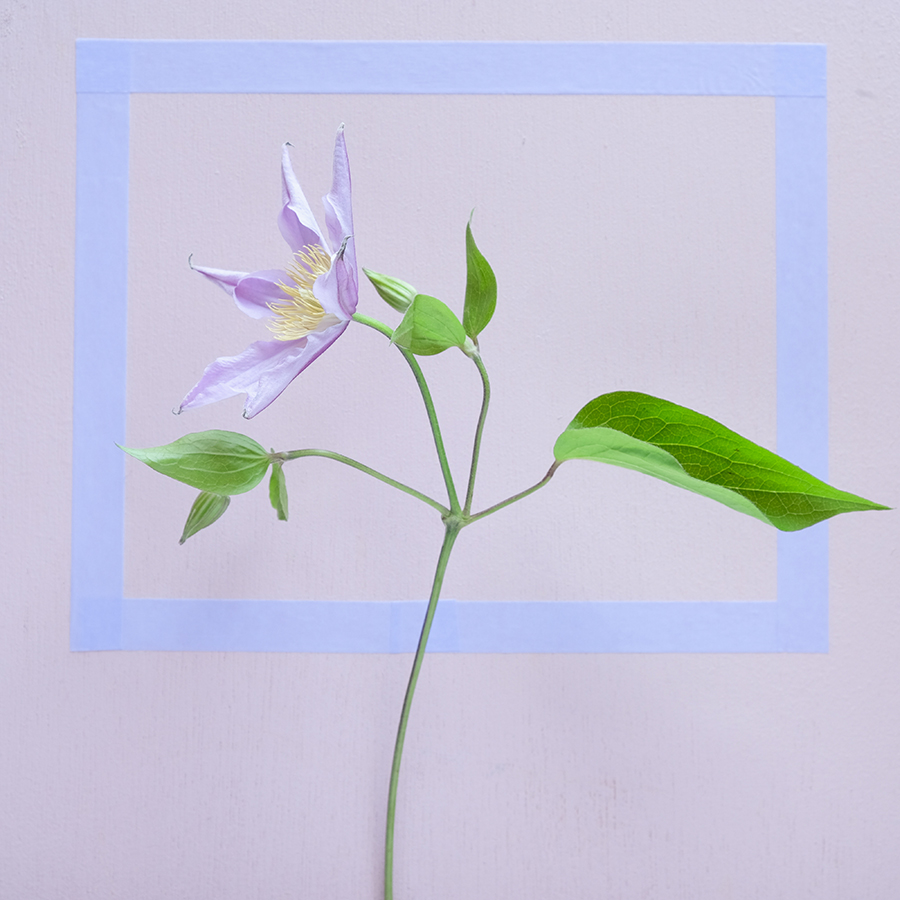
Let the plants dictate
Don’t try to force flowers or foliage to bend into unnatural shapes or positions. Let plants dictate the way they want to be placed and adjust your ideas accordingly. Here, the fronds of one of the flowers seemed to resemble seaweed, so I placed it with other coastal-related objects.
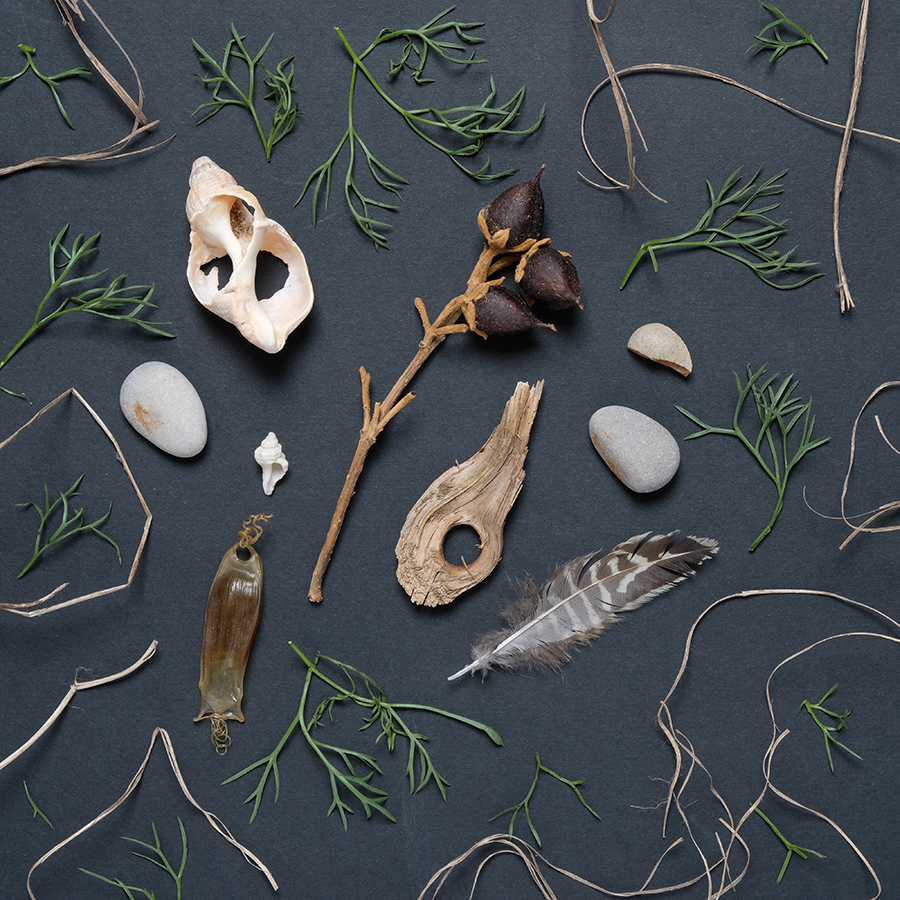
Keep it simple
In 2012 Hugh Fearnley-Whittingstall released a cookbook called Three Good Things on a Plate, which showed the power of paring things back. I’m a big fan of this approach – just as editors trim and trim until no extraneous words remain, photographers who want their pictures to stand out do the same.

Look outside photography
Inspiration often comes from art forms outside of photography – if something speaks to you then don’t question it, just follow your gut. On a recent visit to the V&A in London I came across some Islamic tiles that spawned a whole series of pictures exploring ideas of design and symmetry.
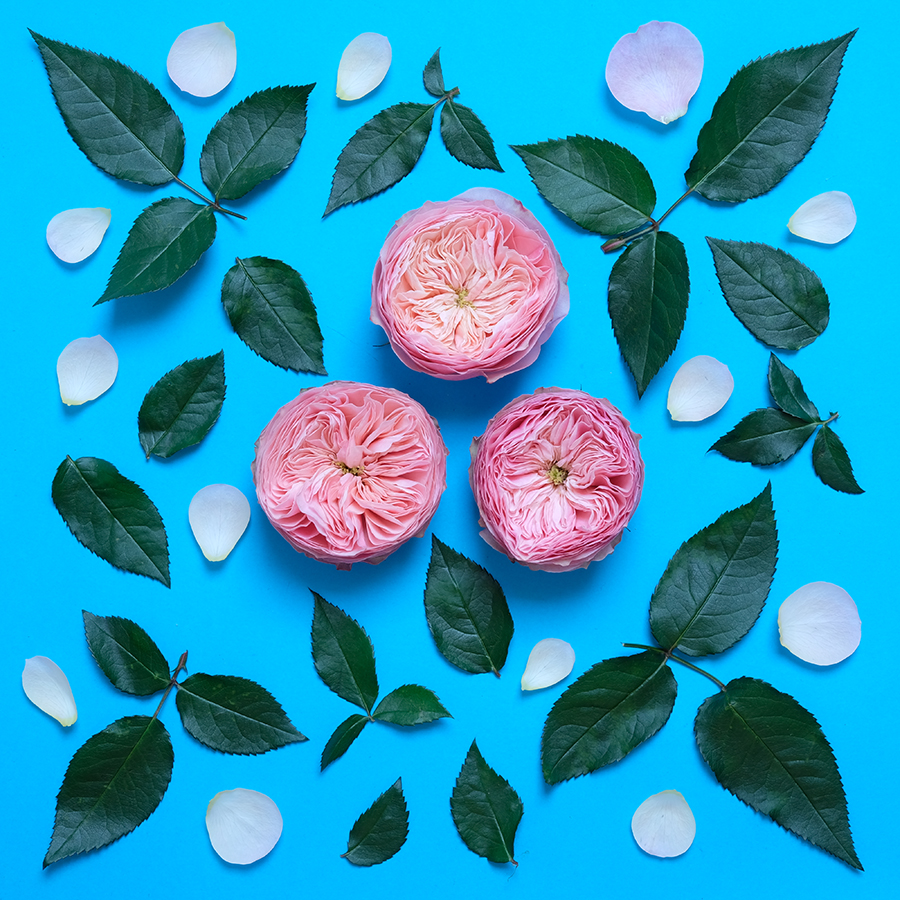
Tracy Calder
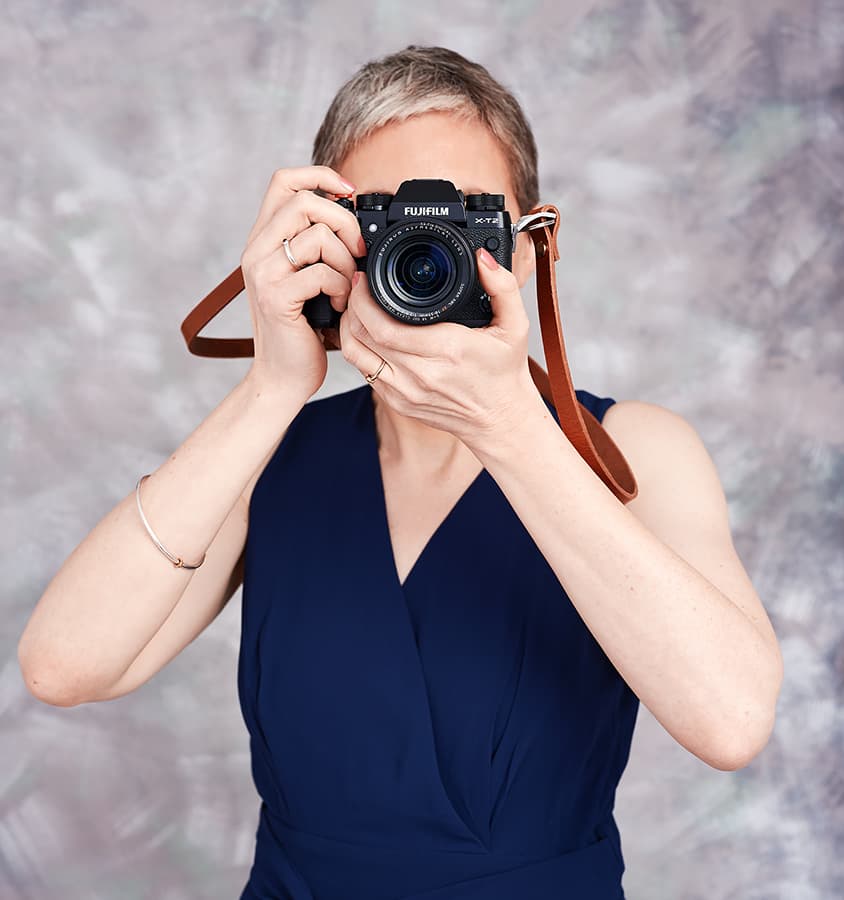
A photo-industry veteran and regular AP scribe, Tracy is co-founder of Close-up Photographer of the Year (CUPOTY) – an annual competition celebrating close-up, macro and micro photography. She has written numerous photography books and runs regular workshops. To see more of Tracy’s work follow her on Instagram @tracy_calder_photo
Related articles:
Top macro flower photography tips
How to set up a still life studio
Can I set up a home studio cheaply?
Better still life photos: top 10 tips
Still life photos with continuous lighting

